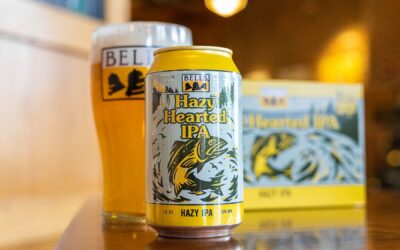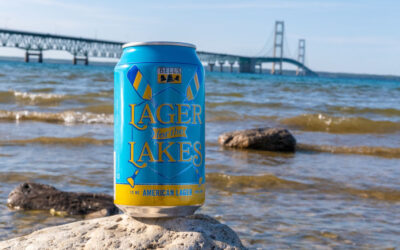Let’s be honest: sometimes a beer just nails the vibe. Tropical Hopslam is one of those beers. ...
Bugs drinking beer? Generating electricity at The Cube, our wastewater treatment facility
Sustainability takes a lot of different forms at the brewery, and one that’s near and dear to our heart is our wastewater treatment center.
Our on-site facility nicknamed the “The Cube,” takes wastewater that is generated in brewing and packaging and pretreats it before sending it to the city’s plant. The Cube removes suspended solids from malt and hops and converts the soluble sugars and alcohol leftover from brewing and packaging into renewable electricity and heat that is used to offset brewing operations.
The facility treats between 180,000 to 200,000 gallons of water. Not only does the Cube save us money, but it also reduces energy consumption, and itself generates 2100 kWh of energy per day that’s used to power the water treatment system and the brewery.
Watch a video of our trip to The Cube with Ferriss, Comstock Process Water Treatment Plant Manager.
Here’s an overview of the process:
Step 1: Solids Screening and Equalization: Upon arriving at “The Cube,” our brewing wastewater undergoes screening to remove large solids left over from brewing, such as hops. These recovered solids are then sent to a composting facility, ensuring nothing goes to waste. Following screening, we move on to the equalization stage, where the wastewater is held and mixed in tanks for approximately 24 hours. This allows for a consistent feed to the biological treatment process, so the anaerobic microbes get consistent wastewater.
Step 2: Biological/Anaerobic Treatment: The next step is when the wastewater is consumed in the biological treatment system. Microorganisms, lovingly dubbed “bugs,” work together to convert the organic components in the wastewater into biogas.
Step 3: Biogas Utilization for Renewable Energy: The biogas generated during the biological treatment process holds immense potential. Comprising primarily of methane with a dash of carbon dioxide and hydrogen sulfide, this biogas becomes a valuable source of renewable energy that powers about 7% of total energy usage at our Comstock brewery. We collect, compress, and channel this biogas into our combined heat and power system (CHP). The CHP features a reciprocating internal combustion engine, not dissimilar from an 18-wheeler, but fueled with biogas with a 150-kW generator. that the CHP also efficiently utilizes waste heat from the combustion of biogas, up to 60% of the total energy potential of the biogas through glycol loops. This reclaimed heat is employed to warm our bioreactors and heat the brewery’s batch soft water, achieving a dual goal of energy efficiency.
Environmental Impact and Energy Savings: In 2023, we anticipate producing about 780,000 kWh of renewable energy, equivalent to $84,000 worth in savings. This remarkable feat translates to offsetting approximately 7% of our total energy usage at our Comstock brewery.
Related Posts
All the 2025 Oberon Day Events
As Oberon Day approaches, several special beer tappings and special events are planned across the country to celebrate its return! Here...
Hazy Hearted: A Modern Go-To IPA Bursting With Fruity Hoppy Flavor
If you catch our Brewmaster Andy Farrell out and about enjoying a beer, it’s probably a Hazy Hearted. “Hazy Hearted is what I drink at...
Inspired Giving awards $113k to clean water nonprofits in 2023
Clean water is vital not just for great tasting beer, but for everyone to live healthy and full lives. In Michigan, we know this...









